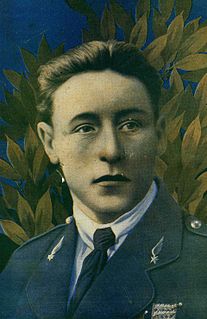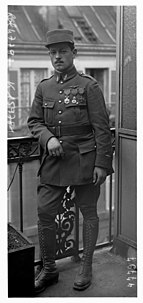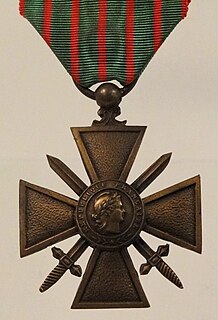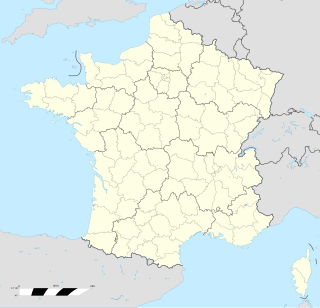
Sous Lieutenant Gabriel Fernand Charles Guérin, Legion d'honneur, Medaille militaire, Croix de guerre, was a World War I fighter pilot credited with 23 confirmed aerial victories.

Adjutant André Julien Chainat was a French World War I flying ace credited with eleven aerial victories.
Sous Lieutenant Jean Pie Hyacinthe Paul Jerome Casale, was a French World War I flying ace credited with thirteen aerial victories. He was one of the few aces that survived the entire course of fighter aviation in the war.

Adjutant Maxime Albert Lenoir was a pioneering World War I flying ace credited with eleven confirmed aerial victories, as well as eight unconfirmed.

Colonel Paul Albert Pierre Tarascon was a World War I flying ace. Despite the handicap of an amputated foot, he was credited with twelve confirmed and ten probable victories in aerial combat. He also served in World War II.
Capitaine Gustave Victorin Daladier was a French World War I flying ace credited with twelve aerial victories. He would continue in his nation's military service after World War I.
Sous Lieutenant Hector Eugene Joseph Garaud was a World War I flying ace credited with thirteen aerial victories. He was one of the rare aces who survived the earliest era of fighter aviation.
Sous Lieutenant Bernard Artigau was a French World War I flying ace credited with twelve aerial victories. He later became an airline pilot in South America, and returned to serve his nation again in World War II.
Sous Lieutenant Fernand Eugene Guyou was a World War I flying ace credited with twelve aerial victories.
Adjutant Armond/Armand Jean Berthelot was a French World War I flying ace credited with eleven confirmed aerial victories. He was a scourge to enemy aerial observers, as his victory record contained six observation aircraft and two observation balloons.
Sous lieutenant Jean Georges Bouyer was a French World War I flying ace credited with eleven confirmed aerial victories.
Commandant Jacques Toussaint François Ortoli was a French Corsican patriot who served France in two World Wars. In World War I, he was a flying ace credited with eleven confirmed aerial victories. He returned to his nation's defense during World War II.
Adjutant Maurice Bizot was a French World War I flying ace credited with ten confirmed aerial victories.
Lieutenant Colonel Jean André Pezon began his military career during World War I and became a flying ace credited with ten confirmed aerial victories. He served his nation throughout World War II.
Sous lieutenantCharles Alfred Quette was a French World War I flying ace credited with ten confirmed and five unconfirmed aerial victories.
Sous lieutenant Alexandre Albert Roger Bretillon was a French World War I flying ace credited with nine aerial victories.
Sous lieutenant René Paul Louis Dousinelle was a French World War I flying ace credited with nine confirmed and three unconfirmed aerial victories.
Capitaine Georges Marcel Lachmann was a French World War I flying ace. He was credited with nine confirmed aerial victories.
Capitaine Henri Albert Péronneau was a World War I flying ace credited with nine confirmed aerial victories. He served his nation for more than four decades.
Sous lieutenant Gilbert Marie de Guingand was a French World War I flying ace credited with eight aerial victories before being killed in a flying accident.








